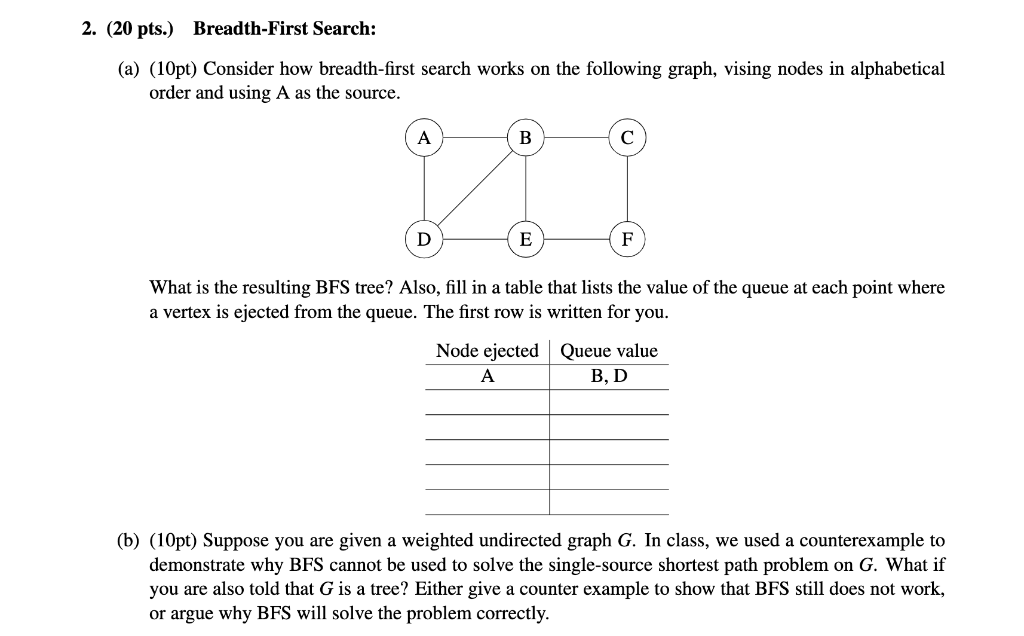Question
Breadth-First Search: (a) (10pt) Consider how breadth-first search works on the following graph, vising nodes in alphabetical order and using A as the source. A
Breadth-First Search: (a) (10pt) Consider how breadth-first search works on the following graph, vising nodes in alphabetical order and using A as the source. A B C D E F What is the resulting BFS tree? Also, fill in a table that lists the value of the queue at each point where a vertex is ejected from the queue. The first row is written for you. Node ejected Queue value A B, D (b) (10pt) Suppose you are given a weighted undirected graph G. In class, we used a counterexample to demonstrate why BFS cannot be used to solve the single-source shortest path problem on G. What if you are also told that G is a tree? Either give a counter example to show that BFS still does not work, or argue why BFS will solve the problem correctly. 
Step by Step Solution
There are 3 Steps involved in it
Step: 1

Get Instant Access to Expert-Tailored Solutions
See step-by-step solutions with expert insights and AI powered tools for academic success
Step: 2

Step: 3

Ace Your Homework with AI
Get the answers you need in no time with our AI-driven, step-by-step assistance
Get Started


